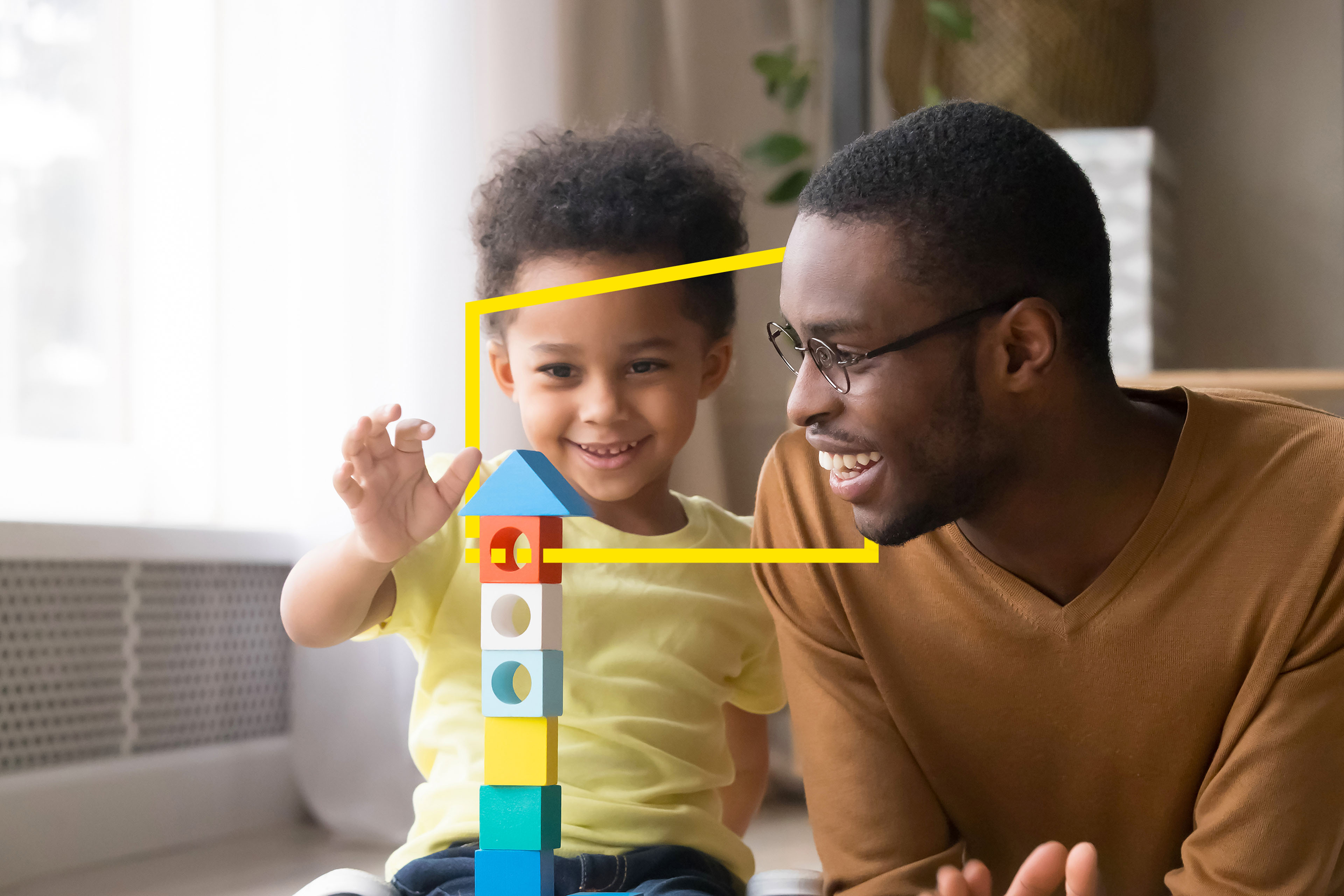EY refers to the global organization, and may refer to one or more, of the member firms of Ernst & Young Global Limited, each of which is a separate legal entity. Ernst & Young Global Limited, a UK company limited by guarantee, does not provide services to clients.

Responding to COVID-19 shattered preconceptions of what it takes to create a digital-first health experience.
In brief
- The surge in telemedicine accelerated health care’s journey towards a smart health ecosystem but future “stickiness” hinges on convenience and speed.
- Strong growth potential exists for physician adoption of patient-focused remote care technologies which are key to an integrated smart health ecosystem.
COVID-19 exposed the US health care system’s reliance on in-person care delivery. The digital health technologies required to support a seamless, anytime, anywhere health ecosystem have been available for at least a decade, but until recently, there has been little pressure for consumers, physicians and health systems to adopt these technologies.
What began as a necessary shift toward digitally enabled remote care has already reshaped care delivery in the near term. For example, nearly half of Medicare primary care visits in April 2020 were via telemedicine (43.5%) compared with less than 1% in February (0.1%).1 What remains unclear is whether the surge in telemedicine has made consumers and physicians more open to virtual care in the future and whether it will accelerate health care organizations’ journey towards a smart health ecosystem.
To address these questions, EY surveyed over 2,000 US health care consumers and 300 US physicians in July 2020 to understand their utilization and views on health care technology (see “About the study”). We found that the US health system’s response to COVID-19 accelerated the adoption of health technology and shattered preconceptions of what it takes to create a digital-first health experience. The result is increased “stickiness” of telemedicine in the near term and increased openness to adopt smart health care technologies in the future. These findings are consistent with EY research in 2019, which found that these groups were already expecting a significant shift to a digital health system in the next decade, before COVID-19.2
These circumstances are not unique to the US. Globally, countries have experienced the same shift to virtual care and are in a similar position to reimagine their health systems as an integrated physical and virtual ecosystem.
Necessity drives new experiences
As the pandemic accelerated, multiple factors, including the desire to avoid office or hospital settings, limited consumers’ direct access to medical care. As a result, 42% of Americans skipped or deferred medical treatment, according to a Kaiser Family Foundation (KFF) poll.3 While some of those who sought medical attention required or preferred in-person treatment, many others utilized remote consultations to assess COVID-19 symptoms or receive care while remaining safely at home.
The result was a massive spike in telemedicine adoption by consumers during the pandemic. (Figure 1) Our research shows that penetration of video consults nearly quadrupled from 5% to 19% while telephone consults more than doubled from 11% to 24%. And for most patients (70%), a telephone consultation worked just as well as communicating their symptoms to the physician in person.
For physicians, adoption of telemedicine was a medical and business imperative, not an option. Use of telephone and video exploded from 20% to over 80%, making virtual care available at most practices almost overnight (Figure 1). This trend was true not only for primary care and specialty practices but also brick-and-mortar facilities such as hospitals and ambulatory care centers.
Physicians report that shifting as much care as possible to virtual channels enabled them to attend to more patients during the pandemic than would have been possible otherwise. The near-universal adoption of telemedicine may explain why very few physicians believe their practices lost patients to remote providers during the pandemic. However, practices with deeper digital capabilities and attractive digital front doors may have a long-term advantage in access to patients and a more satisfying customer experience. Thus, it is not surprising that the vast majority of physicians (81%) plan to accelerate their introduction of new digital technologies. Another 63% will make moderate or significant investments in these technologies in the next three years.
Future “stickiness” hinges on convenience and speed
Our research suggests that increased adoption of telemedicine by consumers is likely to remain above pre-pandemic levels and that adoption of other health technologies will see significant growth in the coming years.
In the near-term, utilization of digital health technologies will dip as consumers’ feelings of safety grow and they return to in-person visits (Figure 2). This trend is already apparent in Medicare claims data beginning in late May, especially in regions such as New York that were no longer experiencing peak COVID-19 cases. This trend is further supported by data from the EY Future Consumer Index, which indicates that 94% of US consumers would feel comfortable resuming in-person medical appointments in the coming months.
Despite this dip, penetration of telephone and video consultations will settle at a higher level than before the pandemic. For example, utilization of video consults will be almost double what it was at the beginning of the year (10% vs. 5%). And while the healing power of human touch is a key belief in medicine, the pandemic has revealed that in-person interactions are not always necessary. Even among consumers who have used telemedicine but prefer in-person visits, 49% are likely to continue using telemedicine.
Longer-term, our research suggests that penetration of all digital technologies will increase threefold to between 30% and 45% of Americans, depending on the technology (Figure 2). While much of the initial shift to telemedicine was driven by concerns around personal safety, consumers indicated they will continue using these technologies for convenience and speed. This partly explains why we see adoption of administrative technologies that streamline the patient experience as eventually surpassing telemedicine in adoption. These include online appointment booking and ordering prescription refills via an app. It will be critical for health care providers to keep these benefits in mind as they look to integrate virtual and physical care in the coming years.
Driving the long-term shift to smarter health
Developers, physicians and health systems all have a key role to play in driving the long-term shift of consumers to smart technology.
First, providers need to continue to make digital solutions available even as some consumers return to in-person visits. Doing so will not only give consumers choice in how they receive their care, but also expose them to new technologies. These include not only telemedicine tools but also such things as wearables and clinical-grade remote monitoring devices that capture and forward biometric data. In this regard, our research shows a heartening trend. As we saw in Figure 2, over 60% of physicians plan to continue using telemedicine technology after the pandemic. What’s more, strong growth potential is apparent in physician adoption of more patient-focused technologies, including remote monitoring, which are key to establishing an integrated smart health ecosystem.
Next, physicians and health systems need a plan to drive adoption of existing solutions so that people can become more comfortable and willing to accept smart technologies in the future. We see a strong correlation between current and future adoption of technology (Figure 3). On average, each additional technology consumers use increases their appetite for future technology by approximately 5%. This suggests that driving adoption today will pave the way for more widespread uptake of future smart technologies. The fact that 69% of consumers currently use two or fewer health technologies suggests this is a large opportunity. To capitalize on this, physicians and health systems should focus on building a digital ecosystem of solutions to help drive cross-adoption today and create platform(s) for additional smart solutions in the future.
Finally, developers need to build their offerings to address the key needs and pain points of their users (Figure 4). This means developing technologies that are laser focused on usability and integrate seamlessly into physicians’ workflows. They must not compromise quality of care or create additional administrative burdens for clinicians. Building for consumers means focusing on features that improve convenience and speed, such as streamlined user interfaces and an integrated suite of tools instead of many disparate apps.
Building on the momentum of telehealth
One silver lining of the pandemic is that the US health system has taken a significant step toward delivering a more integrated, seamless and smarter health care experience (Figure 5). It has challenged preconceived notions of how health care needs to be delivered and has eliminated existing barriers to digital health adoption. Not only have health systems and physicians learned how to successfully deliver remote care, they intend to do it in the future as an integral part of their service mix. Consumers have seen firsthand how health technologies can simplify, enhance and personalize their care experiences, and they will increasingly demand such care in the future.
Much has been learned about how to integrate and align care across physical, remote and virtual environments. And more learnings lie ahead as organizations take necessary steps to continue the transition to smarter health. This includes developing shared technical and communications standards; allowing the permissioned, secure exchange of health information; and building the capabilities to draw actionable insights from the vast amounts of structured and unstructured health data. These technical elements are critical to create the right data environment for a connected health ecosystem and are covered in our recent piece on health information architecture.
In adapting care to meet patients’ needs during the pandemic, what has ultimately occurred is a shift in long-held beliefs around what it takes to provide a digital-first health care experience. Executives and health care leaders should ask themselves three questions as they reimagine their smart health transformation:
- Are you taking a bold, holistic, and data-driven approach to identify and prioritize which smart health opportunities to pursue?
- Does your smart health ecosystem have clear entry points for consumers, and will it expose them to new experiences to drive organic demand for new services?
- Are you pursuing a people-first rather than technology-first approach to your digital transformation and investment strategy?
About the study
In July 2020, EY surveyed online 300 physicians and 2,032 health care consumers in the US. Physicians included primary care and family medicine practitioners and surgical and non-surgical specialists. Respondents worked in a variety of practice settings, including solo, group and hospitals. Consumer data were weighted to reflect population and geographic distributions.
The objective of the study was to examine consumer and physician attitudes and propensity to use digital health technologies for health and wellness, as well as to explore willingness to engage with future health care technologies that are accelerating the changing face of health care.
Definitions in our study
- Digital health
Digital health technologies as a broad array of technologies that underpin different ways of delivering health care, drive better health outcomes and optimize business models.
- Telehealth
Telehealth (of which telemedicine is one aspect) as an interactive consultation between patient and clinician or between clinicians via a range of capabilities (voice, video, or both) and modalities (synchronous or asynchronous) across the continuum of care.
- Smart health
Smart health as a seamless, interconnected health care network – or ecosystem that uses cutting-edge technology to decentralize care delivery, optimize resource use and care outcomes.
Michael Wheelock, PhD, EY Global Advanced Insights Lead and Sheryl Coughlin, PhD, EY Global Health Sciences and Wellness Senior Analyst contributed to this article.
Summary
COVID-19 has driven the health industry’s digital transformation to the point of no return. Shifting to provide a digital-first health care experience by building deeper digital capabilities and attractive digital front doors may bring long-term advantage in access to patients and a more satisfying customer experience.
Related news
How will you design information architecture to unlock the power of data?
As emerging technologies transform health and care, we explore how to create the right data environment for a connected health ecosystem.




